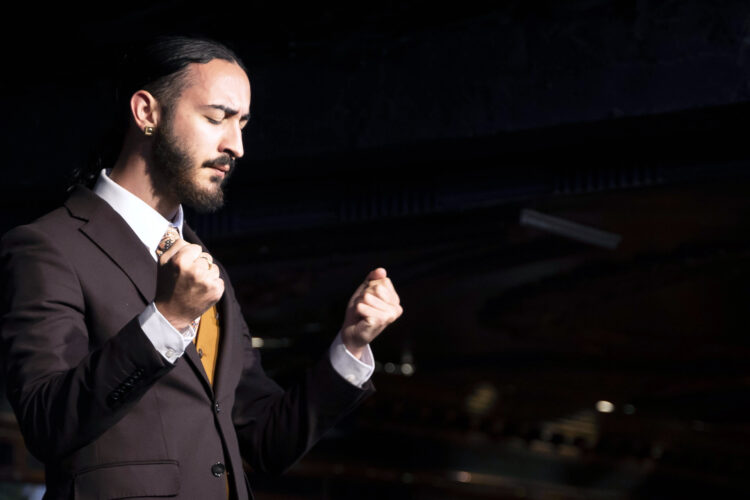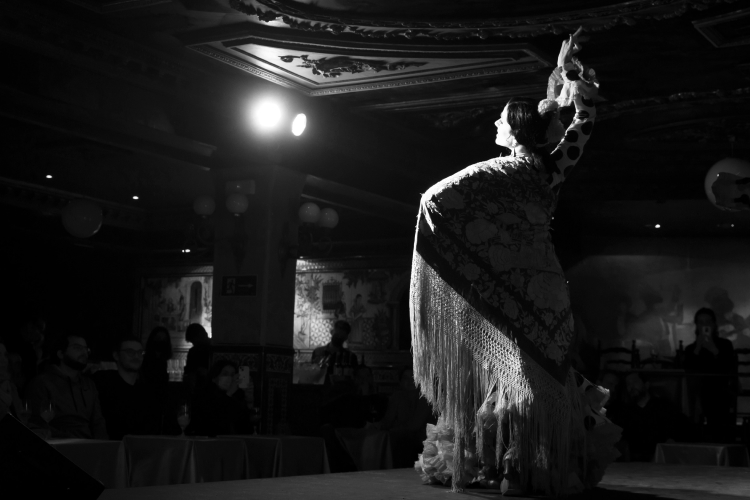
José Escarpín and his Guinness World Record at Tablao Flamenco 1911
The Guinness World Record of flamenco arrives at the oldest flamenco tablao in the world: Tablao Flamenco 1911.

It is a palo (style) associated with the eastern part of the south of the peninsula (Almeria and Murcia) whose roots are in the Taranta, a flamenco style without meter, not danceable. However, the dance takes reference from the rhythm of Zambra. These locations are known for mining, making this one of the “mining” styles par excellence and the only one that can be danced.
We choose the taranto dance when we want to create a sentimental and melancholic scene rather than a dramatic one. It is a style that requires a large scenic and interpretative weight.
In this style you will find lyrics that make reference to the aforementioned geography (Almeria, Murcia) and the mines. There will also be lyrics that reinforce the melancholic feeling through themes such as the loss of love, the longing for a loved one, an unrecoverable time or the loneliness of mining work.
The costumes used for this dance are usually sober, with dark colors or intense reds. We can find accessories such as the shawl, predominantly in the female dance.
When we talk about a classic structure of the dance, we have to take into account that the artists, due to their wide knowledge and technique, can vary it, eliminating, shortening or changing parts of it. In this style you will find a structure divided in two parts. Normally, the dance starts as Taranto and ends in another style called Tangos (not to be confused with the Argentine Tango) which shares the same rhythm, but is more accelerated.
Regarding the Taranto we have to point out that it is a technically very complex dance since it uses more “stylized” elements. First you will hear the introduction of the guitar and the singers under a very particular sonority, giving way to the dance. In this first part the cante and the guitar will be “calling” the zapateado (or footwork) as if it were a question-answer dialogue with rhythmic alternations. The ayeos (parts in which the cantaor sings ‘Ay’) are very characteristic of this style as are certain melodies that the guitar coordinates rhythmically with the feet.
The second part of the dance begins in the Tangos style. It is characterized by being more accelerated and festive. At this point you will observe a great contrast with the first part. At the interpretative level, we observe a more burlesque, attractive and sensual attitude and gestures. The tempo will be progressively accelerating looking for the conclusion of the dance.
The history of the Taranto is relatively recent. As a dance, we first saw it in the hands of Carmen Amaya, great-aunt of one of our dancers Karime Amaya. According to recent research, this dance style was invented by Carmen together with guitarist Sabicas and performed for the first time on January 12, 1942 at Carnegie Hall in New York. This show presented 15 flamenco ballet numbers, highly acclaimed by the public at the time, among which was this Taranto. This type of show already had precedents in other dancers such as Antonia Mercé ‘La Argentina’. They consisted of alternating works by classical Spanish composers such as Albéniz, Turina or Falla with dances with flamenco roots. This first version was simple and was based on another style that she had already mastered, the “Rondeña-Zambra”. That is to say, a style without compás like the Rondeña to which a Zambra rhythm is added.
Enjoy!